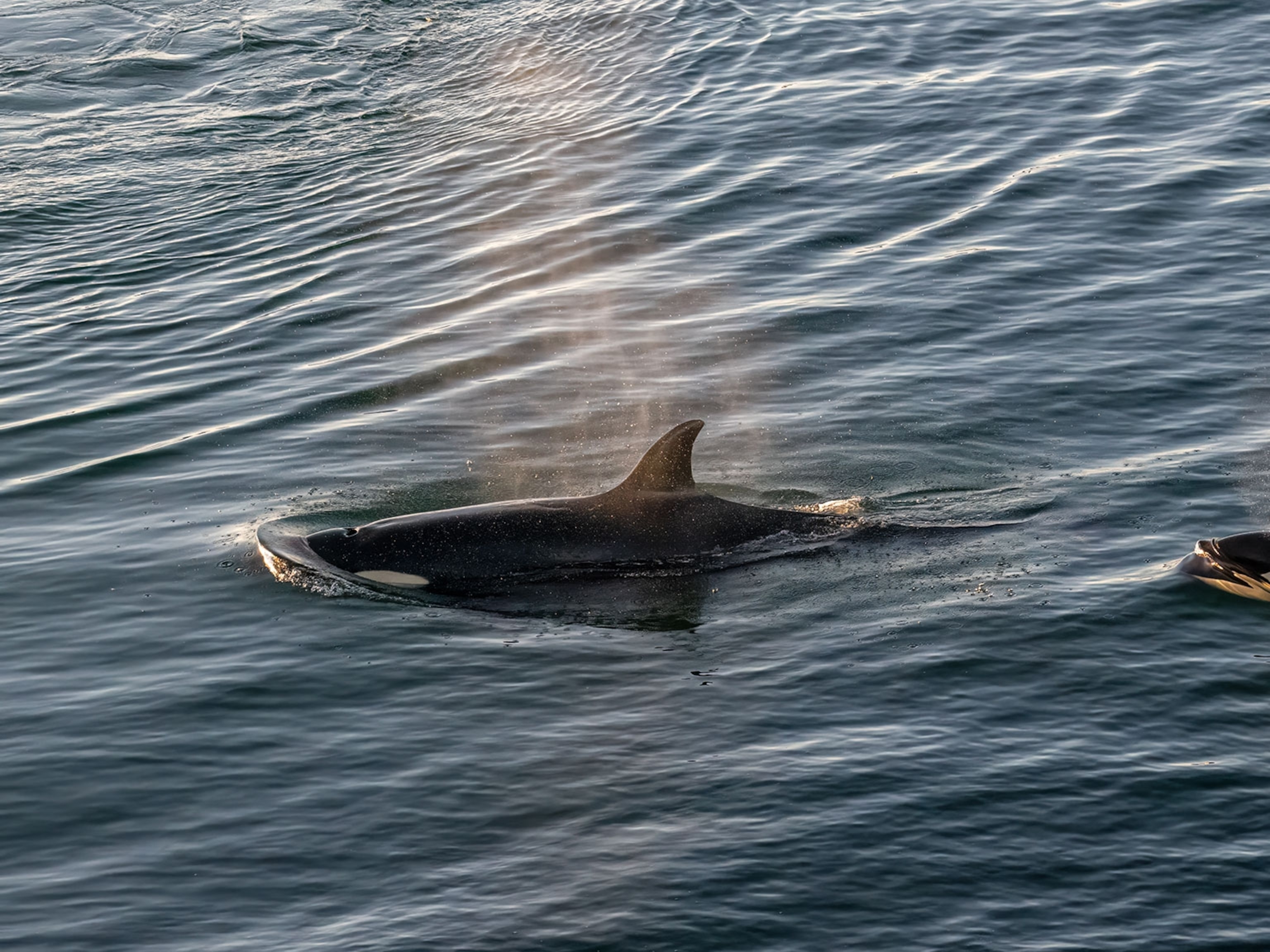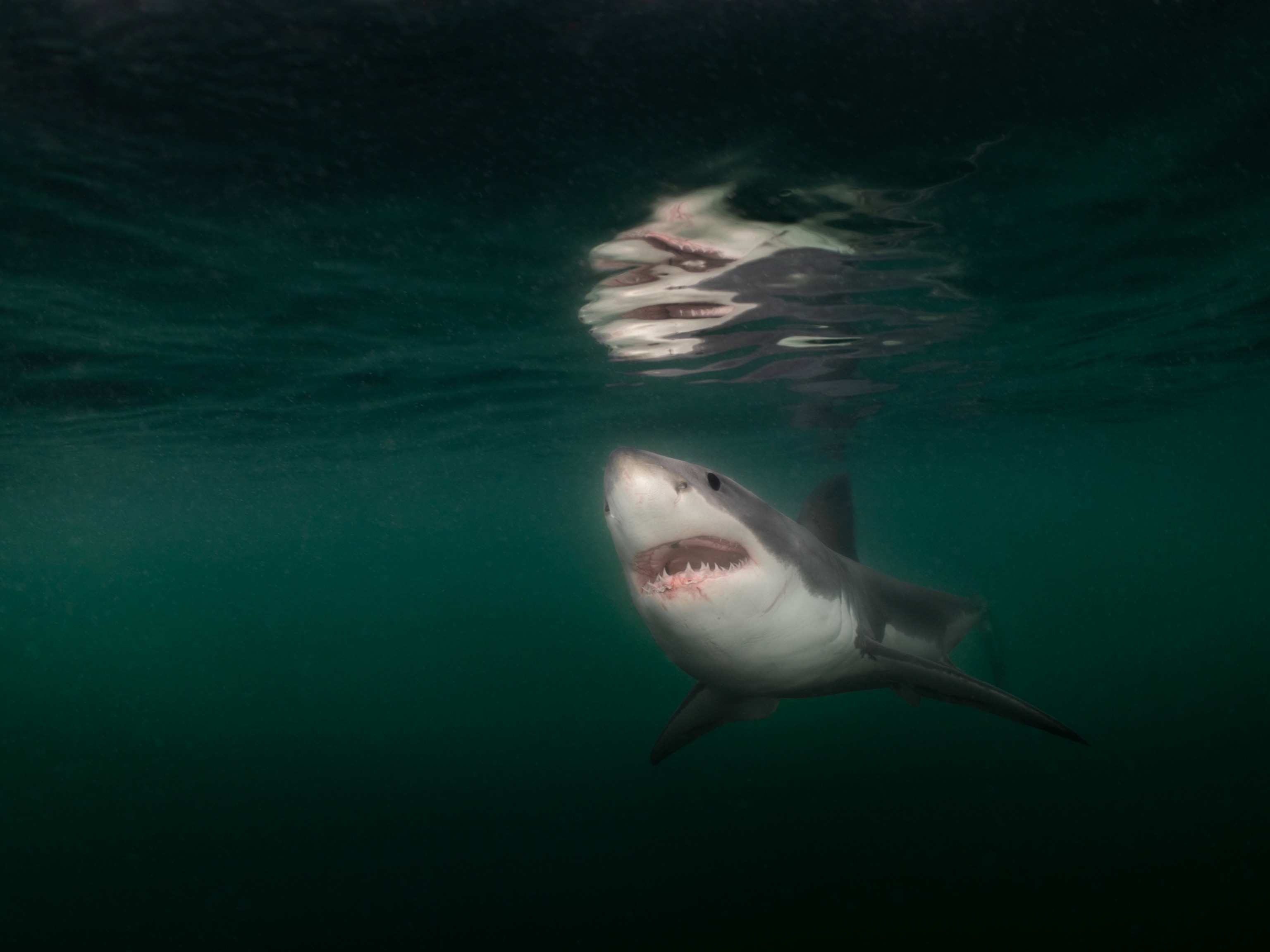
Why Great White Sharks Hang Out in Warm Whirlpools
New research on famous white sharks Mary Lee and Lydia shows the giant fish spend a surprising amount of time in warm oceanic eddies.
The lives of great white sharks, despite their notoriety, remain murky.
Foremost among the many questions that remain: Where do they spend most of their time, and what guides their enigmatic movements? Why do adults often head to the open ocean, far from the prey-rich coasts where they spend much of their youth?
New research helps shed light on both questions. In a study published recently in the journal Scientific Reports, scientists tracked two female great whites—popularly known as Mary Lee and Lydia—using advanced satellite tags in the western Atlantic. The team found that when the animals head to the open ocean, they spend much of their time diving within warm circular currents, known as anticyclonic eddies. Overall, the animals could be found within these whirlpool-like gyres more than three-fourths of the time.
The sharks also spent up to 40 percent of their days at 600 feet or below, says study co-author Camrin Braun, a doctoral student with MIT and Woods Hole Oceanographic Institution. (Read more about why great white sharks are still a mystery to us.)
That came as a surprise to the study authors, because these warm-water eddies were generally thought to be areas without a lot of life—and thus less prey.
“At first,” Braun says, “we were left scratching our heads.”
Life in the Deep
But recent work challenges this view.
While the surface may not be teeming with life, scientists have begun to look deeper—and finding much more than they expected.
One 2014 study estimates that the twilight zone—the region of ocean between 660 to 3,300 feet below the surface—is home to 10 times more fish than previously thought. The biomass, or mass of fish found in this area worldwide, is equivalent to a hundred times the Earth’s global catch of seafood, according to the New York Times.
Another study, which estimated biomass at various points in the Atlantic, found the highest levels in these warm-water eddies.
The new paper is also surprising since great white sharks “are effectively warm-blooded, and have to keep body temperatures above that of the ocean to be able to digest food,” says study leader Peter Gaube, a senior oceanographer with the Applied Physics Laboratory at the University of Washington. (Learn more about why great white sharks are thriving in U.S. waters.)
Diving deep exposes sharks to colder water, so for the animals to behave in such a way, they must have a good reason, Braun notes. The study authors suspect that great whites are doing this to take advantage of the region’s abundant prey, such as squid, he adds.
The whirlpools are created by intersecting oceanic currents that are slightly warmer than the surrounding waters, allowing heat to penetrate more deeply than usual into the twilight zone.
Tobey Curtis, a shark expert at the U.S. National Marine Fisheries Service who wasn’t involved in the study, suspects these formations allow great whites to more easily dive down and hunt prey without getting as cold.
“This study helps explain how these sharks can make a living so far away from prey-rich coastal waters,” he says.
Follow the Prey
The two female great whites featured in the study were tagged in 2012 and 2013, with devices that record horizontal position. Lydia was also equipped with a tag that measures water temperature and depth. The tags allow the researchers to track 3-D movements through the Atlantic.
The work was done by a team of scientists aboard a ship operated by OCEARCH, a nonprofit that tracks white sharks in real-time as they meander about the globe. (Read more about Mary Lee, the celebrity great white of the U.S. East Coast.)
Generally, tracking results show white sharks appear to spend more time diving during the day, and more time at the surface come nighttime. This corresponds with daily migrations of prey like squid, suggesting the predators are following their prey.
Although data from two sharks can’t be viewed as definitive, it agrees with information gathered in another study that Braun co-authored last year. The paper also found the animals that ventured to the open ocean spent a large portion of the time at depths below 600 feet, presumably hunting.
“These results most likely apply to other white sharks, and other large predators that use these offshore habitats” for finding food, Curtis says.















































